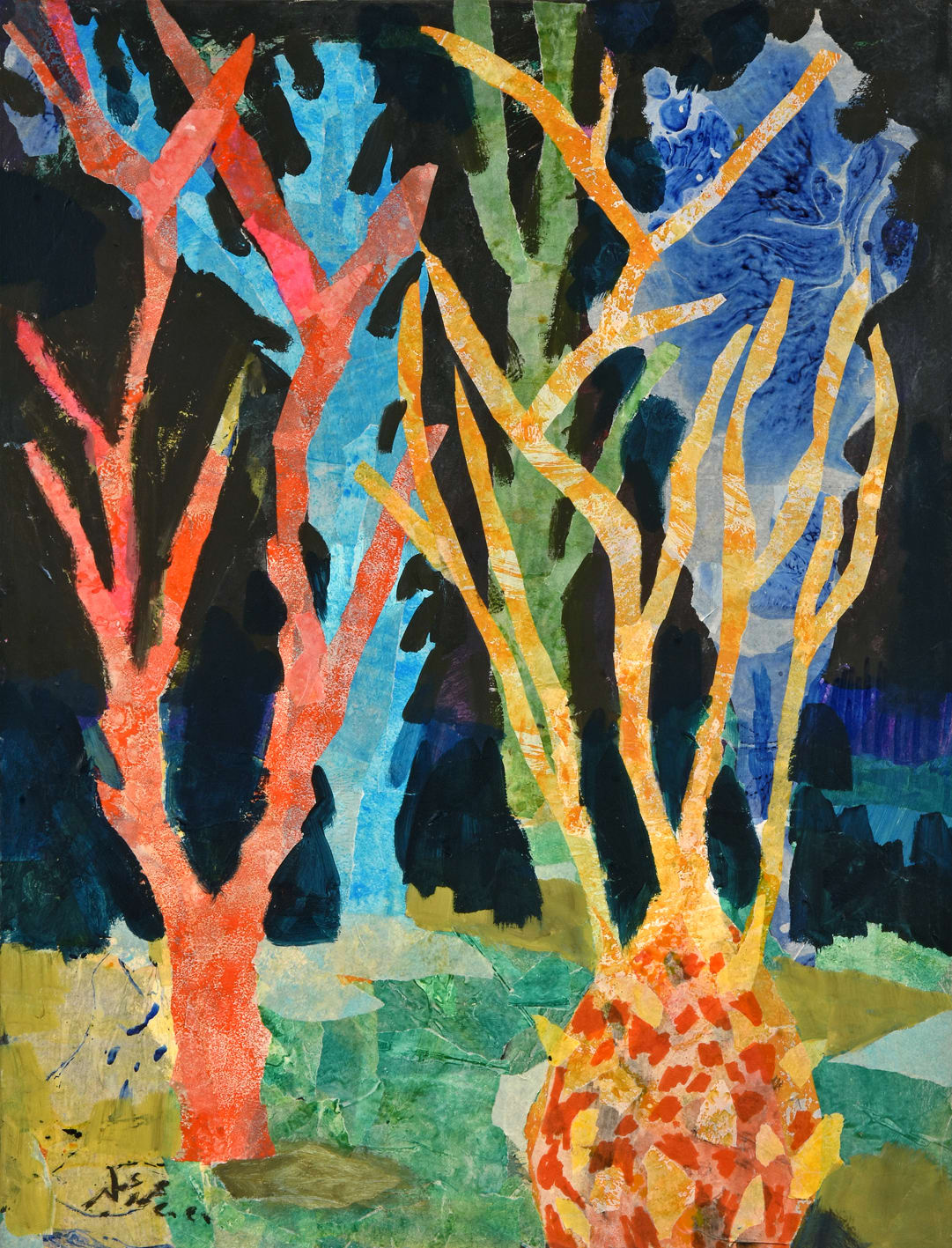Mohamed Abla Egyptian, b. 1953
Earthly Treasures 6, 2021
Collage and Mixed Media on Canvas
60 x 80 cms
23 5/8 x 31 1/2 inches
23 5/8 x 31 1/2 inches
Copyright The Artist
$ 7,700.00
Exhibitions
Literature
The Silk Roadincludes a selection of abstract artworks which synthesise calligraphy, collage and traditional MiddleEastern techniques which explore folktales from North Africa, the Levant, Central Asia and the Indian subcontinent.A common theme in Abla’swork is the exploration of new methods of mark making. For The Silk Roadseries, theartist employs the Turkish Ebrutechnique (paper marbling), which is the act of floating paper in a tray filled withwater and oil paint. The paint is then carefully transferred to the surface of the paper to create colourful marble-likepatterns.Abla cuts shapes from the variously dyed papers, arranging them into compositions resembling animals,heroes, princesses and other folktale figures and imagined scenes derived from the ancient Silk Road network,which was operational from around 120 BCE to 1450s CE.Narratives play an important role in Abla’s work, and the inspiration for this series stems from the artist‘s researchinto the history of the Silk Road, as well as recent travels to India, Syria and Iraq. In his works, the artist selects specificfolktales which he sees as symbolic of the unsettling political and economic issues in Egypt following the Revolutionin 2011.
Abla reimagines the activity of the Silk Road through his artwork and draws parallels between past andpresent politics of the East and West. In another work, The Copper City,Abla chose a Pakistani fairy tale as a point ofdeparture. In the story, all of the inhabitants of a city have been turned into copper except for the princess who islocked in a tower. In a conclusion similar to that of the German fairy tale Rapunzel, a hero rides through the frozencity and saves her. This fable symbolises political and social unrest in many of the countries within the Silk Roadnetwork, which paralyse government efforts to address wider problems within their countries.

